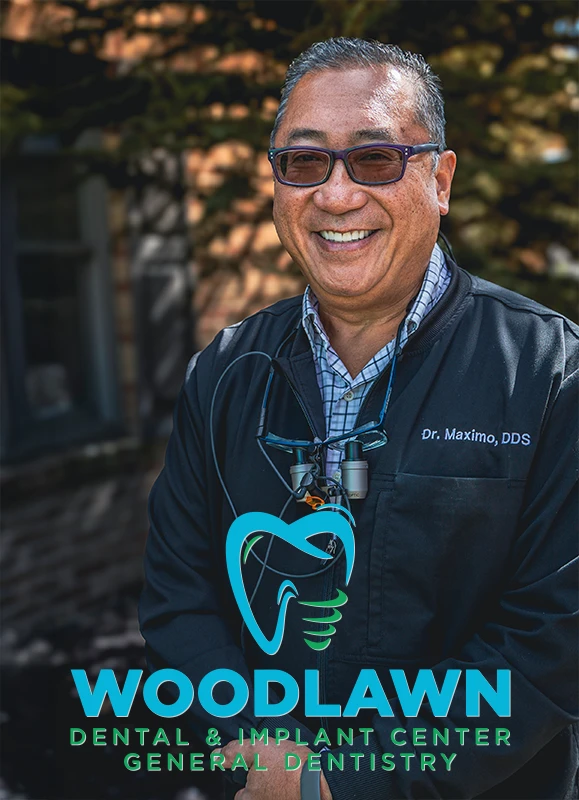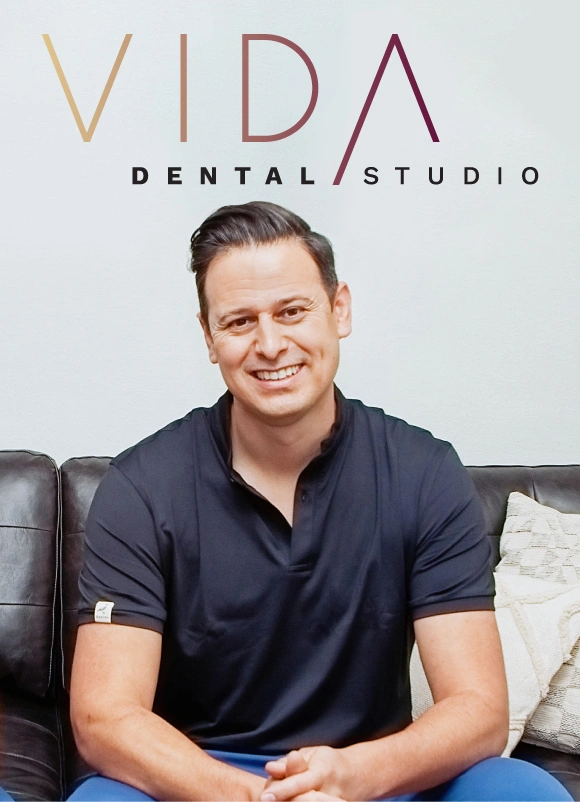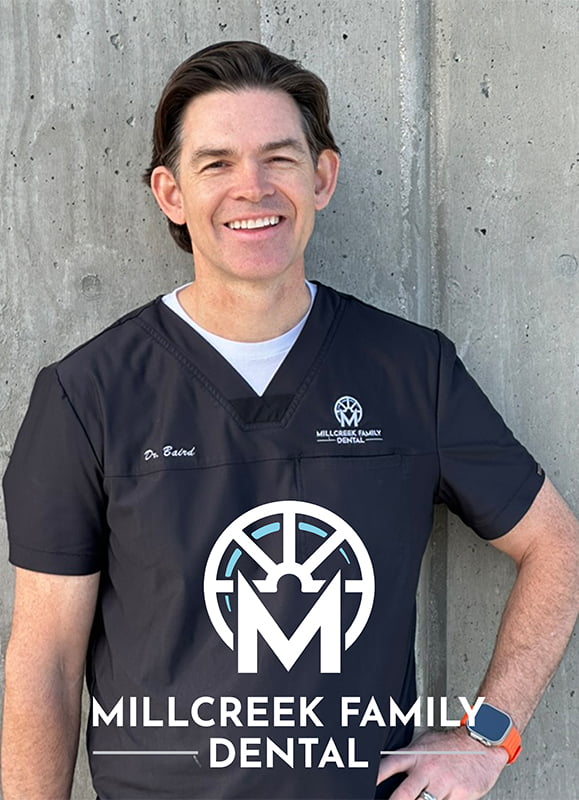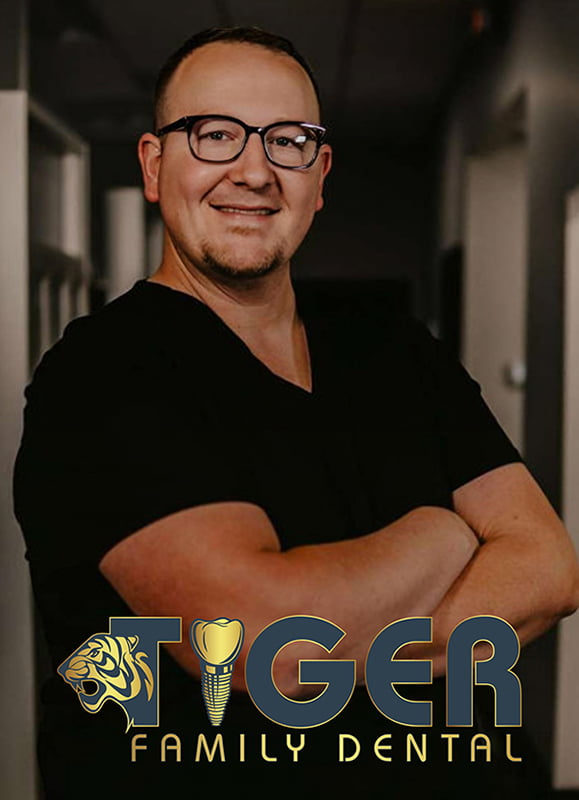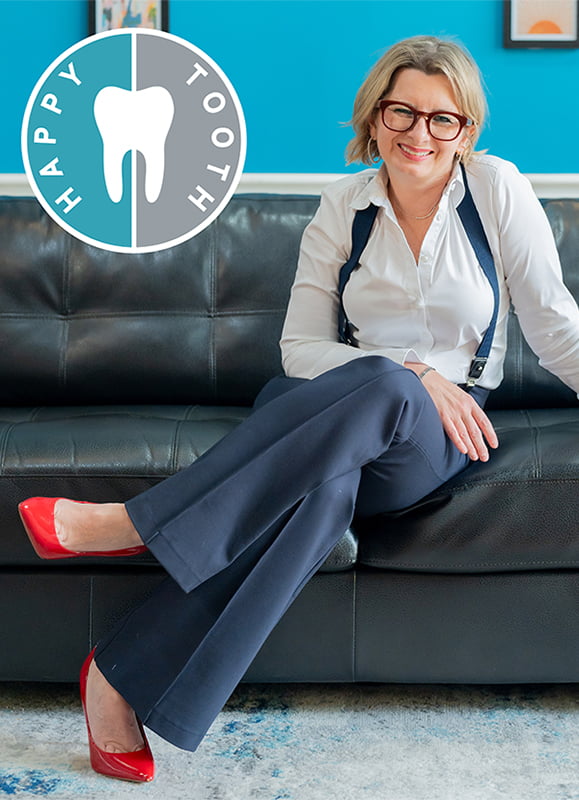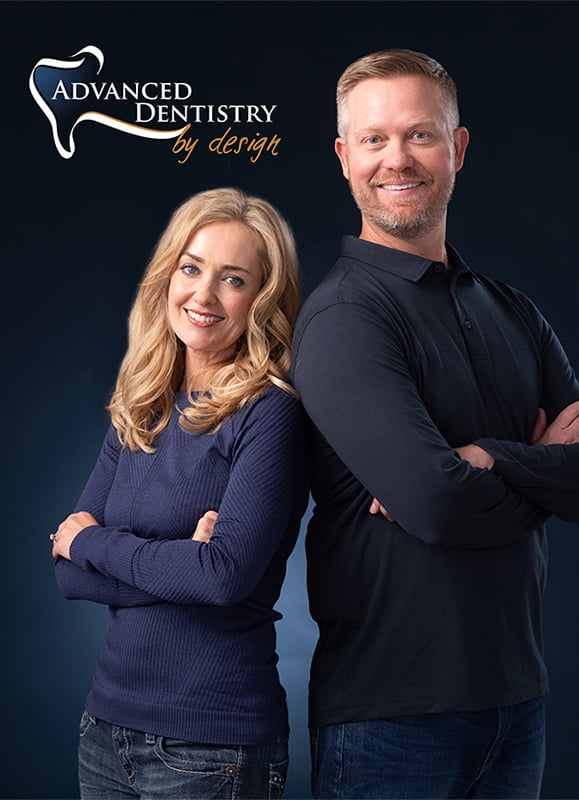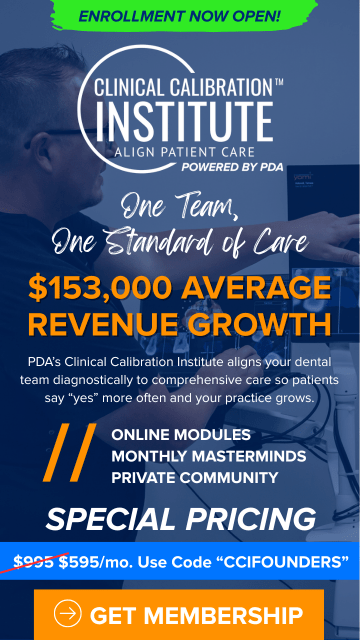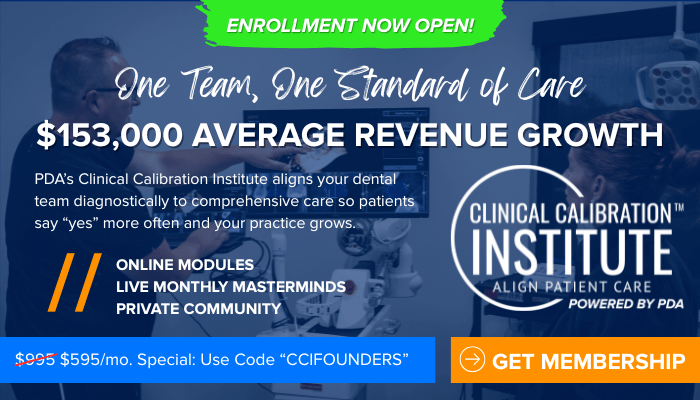Episode 184 – Requested Replay: The Silent Killer You Aren’t Screening For
“Why do I do this? Because it saves people’s lives.” ~Dr. Bruce B. Baird
This is serious. It saves lives.
As a clinical dentist, I’ve always been driven to educate myself so I can give my patients the best possible care but physiological risk – aka sleep apnea – is especially close to my heart because of my personal experience with it.
I’d been struggling for years with my weight, my focus, and my energy levels. I was even falling asleep in front of patients but everything really came to a head when I fell asleep while driving and ran off the road.
Today I would like to encourage you to do two things: first, incorporate sleep apnea screening into your treatment plan process so you can better serve your patients, and second tune in to today’s episode where I share:
- My personal sleep apnea journey
- Thoughts on oral appliances and CPAPs
- The difference proper physiologic risk factor care can make in kids (and adults)
Never miss an episode! Subscribe on iTunes & Spotify. Visit us at http://www.productivedentistpodcast.com
EPISODE TRANSCRIPT
Hey, it’s Dr. Bruce Baird, with The Productive Dentist Podcast. I got started doing sleep apnea back. Gosh, I guess it’s been 15 years ago, before it was like the, you know the thing that was going on with everybody, but I got started with it and I call that physiologic risk. So if you heard me talking on the other podcast about some of the risk factors I see, I see a lot of erosion and I see bruxism on these patients. So it’s something that has become a big part of my practice. I’m somebody who has severe sleep apnea and I had a guy who was considered the grandfather of sleep medicine or sleep dentistry who became good friends with Edie Spiegel, Edie passed away a few years ago and John Remmers, John Remmers did the first polysomnogram in the world in the US.
He is a, when you see Remstar with the different types of C paps. John was the man behind it and so when I had, when I wanted to learn about sleep apnea, I had both those guys come to my office, I wanted to learn it from who I consider being the best and I’ve done that in almost every aspect of dentistry. I feel like I went to Pete Dawson, Pete was in my opinion. When I was worried about learning restorative, I just felt like he was the best. John Kois the vast you know, there’s a lot of best, but it’s Carl Mesh with implants, Mike Pecos with grafting and you just go down the list, but I wanted to have Edie come in. So Edie came, came in and we wanted to have we want to do some home recordings using a Remmers recorder and one of the patients didn’t show up and so I said, “Well, I know I snore. So why don’t we test me?” I’m somebody who had already had what they called idiopathic cardiomyopathy, which is an enlarged left ventricle and my ejection fraction was down just above 37, or 38, which a healthy male, at my age I was 39 years old, probably shouldn’t have an ejection fraction in the high mid-60s. That means how much blood coming out of that left ventricle. So anyway, our patient didn’t show up. So I said, “Well, I’ll do and I know I snore.”
So I took the recorder home and the next day we did the results of the recorders, and one of the patients who showed up they had mild to moderate apnea. I think they were stopping breathing 14, 13 times an hour. Then we tested then they pulled my stuff down. I was stopping breathing 33 times an hour, my pulse was going to 180 beats a minute and my pulse ox would drop to 62%. Well, you can’t hold your breath and get to 62%. I can tell you pretty much straight up, you’ll pass out before you do. So all night long. I’m doing this gasping for air clenching, not so much bruxism but sleepy in the daytime, I had all the signs and symptoms. So we got John Remmers. involved. I talked to John, John came in and John is a firm believer even though he’s the one who invented the CPAP. He’s a strong believer in oral appliance therapy also. So I began trying all the different appliances that were out there from the, you know, Keith Thornton has developed the tap appliance. There’s a Tap 2, Tap 3, Tap 4, I tried three or four of the different taps. I tried, and I tried, I tried a bunch of different attachments and a bunch of different appliances and what I found most comfortable for me was the samba Dan, there are several others that are kind of knockoffs of that now. So that was comfortable because I could actually separate my teeth I didn’t feel like I was locked in. So I began wearing this oral appliance therapy and it tended to do very well for me for a while and then I started having TMJ problems. We opened the bite a little bit, and I still had TMJ problems and so I finally I was to a point where I was like, “This is hurting my jaws. It’s changing my bite significantly,” and I’ve done hundreds of oral appliances that it doesn’t bother the patient at all, but for some reason, it really affected me. So my option two was, I think I’ll go have surgery done.
So I went, my buddy is a surgeon and pathologist and just a super guy and he said, “Well, we can do a genio tubercle advancement,” which means I moved my jaw for my lower chin forward where my attachment my tongue and it would pull my tongue forward. “Also, we’ll do a palatal resection, we’ll do a tonsillectomy, we’ll do a nasal plastic,” and I told him, “Well, while you’re in there, just take off all my buckle tours. I because I’m such a pleasure, man. I had a huge buckle tour. I remember I’m biting at 1000 pounds per square inch. So he said, “Well, Bruce, I think we ought to at least do this over two visits, maybe even three,” and I was like, “Nah, you’re gonna get one shot at me.”
So six and a half hours of surgery. I think I lost 25 pounds. After that surgery, it was miserable and within six months, I was snoring and still had apnea. So having said that, I said, “Well, I guess nothing’s gonna work for me,” and by golly, I’m not wearing one of those masks. I’m not gonna wear the CPAP because I just don’t want to wear it and I was actually a 10% owner in a sleep lab here in my hometown. So that I didn’t wear anything for a year and a half and all of a sudden, I was ready to see my dad when he was living over in a small town called Mineral Wells, Texas where I grew up and I’d gone over and I was drinking probably, I don’t know, four liters five liters a day of Diet Coke, because I was sleepy all the time but on the way back from Mineral Wells one morning I ran off the road and fell asleep and kind of scared me. I didn’t kill myself. I didn’t kill anybody else but it really scared me.
I was falling asleep at Sonic Drive-In when I would order a drink. It would take them like 30 seconds to get it out there. I’d already been asleep. I remember one time my assistant summer Carol was sitting with me and I’m designing a Sara crown and guess what? I fell asleep designing it right in front of the patient summer said, “Hey, Dr. B and I went oh yeah Keoki you know, I literally was dozing off. I can sit in a chair. You’re falling asleep.” I just wasn’t exercising, I felt lousy. You know, it was just a tough, really, really tough time for me but that follow running off the road was significant. I got home, I told my wife, and she said, “We’re gonna get you a CPAP,” and I, I got a CPAP and I’ve been wearing it ever since. My ejection fraction now is back up to mid-50s. I don’t have cardiomyopathy anymore. My blood pressure is normalized.
My weight has dropped by 30 pounds from what I and I’ve done nothing different, except now I’m breathing at nighttime and the look and appearance and all that stuff. I just tell my wife, I’m Tom Cruise, and I’m requesting a fly and so I’ve got my little mask on, I do a full mask. I know some people use nose pieces or whatever I’m just telling you. The reason I’m telling you this is because there’s no one set solution. I don’t want you to just be all on the oral appliance guy and I make these for physiological risk patients that have apnea. I was on the Reggie White foundation, I actually went to the, to his induction in the Hall of Fame ceremony years ago, and Sarah White, her, his widow, I got to know her very well and, you know the treatment of apnea. I don’t care what it is, but we got to help people. We’ve got to be able to help folks and so get your training. I think Kent Smith does a fantastic course, in the Dallas-Fort Worth area. It’s called wasted days, sleepless nights, or something like that and Meghna Dassani down in Houston is doing a fantastic course she’s a productive dentist. Both of them have been through PDA numerous times.
This is, of course, that we teach some of these things, but go to a course to get educated about it, but understand that there’s not one solution. The other thing that kind of drives me nuts is I know, you know, when you have kids, when they’re tired and they’re sleepy, how do they behave? Well, usually they’re little buttheads. Well, I was a little butthead as a kid, because I had ADD, and ADHD, and I still have it. Not as severe, because I’m sleeping better but ADD and ADHD are a sleeping disorders. Probably 90% of the time now I will say I have a daughter, I’m not, my oldest daughter, but her daughter. I have a granddaughter who actually has central apnea, she stops breathing and so she has to wear a monitor 24/7, She’s now five years old, and still wearing the monitor. We’re hoping she’ll grow out of it but so some people do have central apnea but obstructive sleep apnea. If you think of these little kids, they all look the same. They’ve got a runny nose, which I had, I would I’d have a wrinkle on my nose from, you know, snot coming out of my nose all the time and wiping my nose all the time because I had allergies. Those allergies, when you’re not breathing through your nose, you’re not getting something called nitric oxide, which really is necessary for facial growth and development. So you have to have that. These kids, they’ve got allergies, they’ve got tonsils, they’ve got adenoids, they can’t breathe that back when I was growing up, people had their tonsils out routinely. I did, interestingly enough, and that caused me to have some pretty significant sore throats and now they say, “Oh, you got to have 10, positive strep tests before an insurance company will pay for it.” Well, I don’t give a crap about insurance companies. If your child or somebody you know, or one of your patients, if you see kids, they come in and they got that little look with the you know, maybe it’s retro mafic.
Maybe the upper is not developed, maybe there’s but start thinking again, allergies, you know, but I have more Docs after I talk about this, that our seminars and more teams come up to me and say, “Oh my gosh, my kids just like that.” My grandkids kind of one of their prerequisites is that gotta have their adenoids and tonsils out and even the end, guys, I’ve got a couple of guys I send to pediatric EMTs that just know me and they they’re going to take care of it, get it done and they’ll write reports for whatever, but you get these kids and they did a study back years ago where the kids that have their tonsils removed that had been diagnosed with ADHD went from the bottom quarter of their class to the top quarter of their class in six weeks. Why is that? Because they’re not sleeping. One of my grandkids was sleeping over at his when he was three. He is three. He snores like a freight train over there. Look back in the back. Mr. Rose got these big titles, well guess what he’s getting ready to get his tonsils and adenoids out. So anyway, I bring that up also, because it’s not just about adults. It’s not just about us. It’s about kids too and it’s, it’s something that I had one mom come up to me and she was crying up front and she said, I wish I had heard this information. Two years ago, my daughter had ADD and ADHD, and after graduation, she left she had gone to a party and was not drinking, and she fell asleep and hit a tree and she passed away she said, I wish I would have known this information beforehand because she was always tired all the time. So, you know, I take it, I take it pretty seriously and you know, all I did was I just hug a hug to bomb us, man, I’m sorry. I’m sorry, I, you know, I wish I would have been able to get that info to you earlier but with every single patient that comes in my office, we go through the risk factors with them and I almost always say something about kids too. If you have any grandkids that have this, you really have to have them evaluated. Why? Because that’s above and beyond. That’s above and beyond the call of duty, why do I want to do it because it makes a difference in people’s lives and that, to me, is more important than putting a crown on a tooth or putting a filling in it too. To me, it’s more important. So I share that information with you and hopefully, it’ll make a difference to somebody’s love, grandkids, kids but I’m telling you when a kid’s sleeping good, man, it just changes everything about him. So anyway, send me any questions to bruce@productivedentist.com Sign up on iTunes for our podcast and I look forward to our next podcast. See you soon. Thank you for joining me for this episode of the Productive Dentist Podcast. If you found this episode helpful, make sure you subscribe and pass it along to a friend. Give us a like on iTunes and Spotify. Or drop me an email at podcast@productivedentist.com Don’t forget to check out other podcasts from the Productive Dentist Academy of productivedentistpodcast.com Join me again next week for another episode of The Productive Dentist Podcast
Have a great experience with PDA recently?
Download PDA Doctor Case Studies
